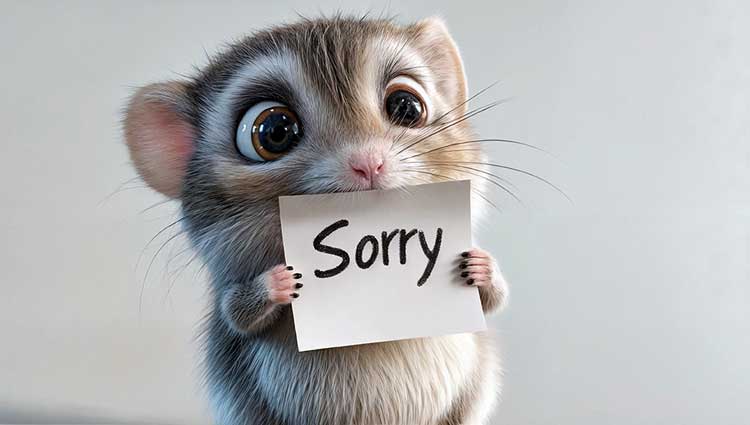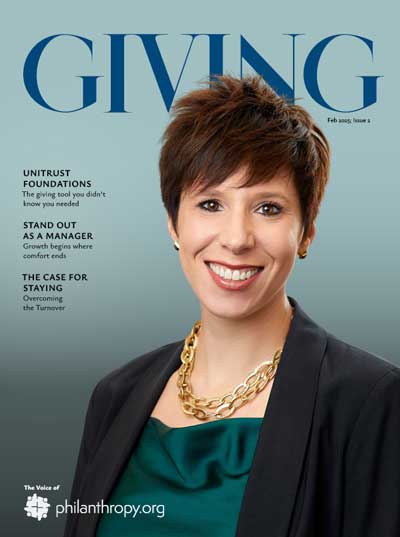Originally Published September 16, 2010. Updated for January, 2025.
Apology Not Accepted: Why You Shouldn’t Beg for Forgiveness in Fundraising
A few years back, I was lying on a beach with my wife, margarita in hand, enjoying the sound of the waves and the luxury of ignoring my phone. Naturally, that’s when it rang.
On the other end was a client, panic vibrating through his voice like a dentist drilling too close to the nerve.
“I’m going to have to apologize to all of them,” he moaned. “In fact, I’m writing the apology letter now.”
“To who? About what?” I asked, already mentally preparing to cancel my vacation. We had just designed a planned giving brochure for him, and it was going out to over 22,000 of his prospects. My stomach twisted like a corkscrew—I was sure we had screwed it up.
But (thankfully for me), it wasn’t our fault.
The mail house had botched the cover letter, addressing it to “Mr. and Mrs.” instead of “Dr. and Mrs.” A capital fundraising mistake (or offense) apparently—especially since this particular mailing was targeting alumni of a prestigious medical school.
Cue end-of-the-world music.
This fundraiser was convinced that unless he groveled in public, careers would end, reputations would be ruined, and Twitter mobs (okay, mailing list mobs) would descend.
So I offered him sympathy. And advice. And another margarita.
“Don’t apologize.”
Yes, I said it. Don’t. Apologize.
(Some people say I’ve perfected the art of not apologizing. Those people aren’t all friends… but they’re not entirely wrong either.)
The Apology Industrial Complex
I understood why he felt the need to send out a soggy “We’re terribly sorry we didn’t validate your full academic pedigree” letter. After all, we now live in an age where microaggressions get more airtime than macro-accomplishments, and an honest oversight is treated like a hate crime.
But here’s the truth: most recipients wouldn’t notice the mistake. An even larger chunk wouldn’t care. And if he sent out an apology? He’d only be highlighting the error—possibly irritating more people than he calmed.
“Let it go,” I told him. “If someone really cares, they’ll write in and you can apologize personally. Quietly. Directly. Like a rational adult.”
Plot Twist: The ‘Offended’ Gave More
So did anyone complain?
Sure. A handful.
And here’s the punchline: three of the people who complained included donation checks in the same envelope.
One for $2,000.
One for $4,000.
One for $6,000.
Yes, really. That little salutation “catastrophe” earned him an extra $10,000.
Oh, and the campaign as a whole?
26% response rate.
To this day, I can’t explain why it worked so well. Maybe the unintended slight gave it an air of authenticity. Maybe it struck the right balance of formality and fallibility. Maybe—just maybe—people don’t actually want every message sterilized and scrubbed by a committee before reaching their mailbox.
Imagine that.
When Mistakes Become Marketing
This isn’t an isolated case. Another fundraiser once mailed a letter that was supposed to include a brochure. It didn’t. The brochure never made it into the envelopes.
Sounds like a disaster, right?
Wrong. Just the opposite that created an opportunity.
The missing brochure prompted recipients to reach out and ask for one. Which meant the development office got personal interaction with dozens of prospects they would have otherwise never heard from.
More connection. More conversation. More donations.
You can’t plan this stuff. You can’t predict it. But you can learn something from it:
- Don’t lead with panic.
- Don’t amplify problems that most people would overlook.
- Don’t assume that every mistake needs a groveling public mea culpa.
- And please—for the love of fundraising—don’t let fear of offending someone with a Harvard M.D. lead you to cripple a good campaign.
So What’s the Lesson?
Screw-ups happen. You’ll mistype a title, forget a brochure, or trigger someone’s inner grievance committee. Relax. You’re not performing surgery. You’re raising money.
And sometimes—brace yourself—a little imperfection works in your favor.
Just don’t be so quick to flagellate yourself in public. That’s not leadership. That’s theater. And last I checked, you weren’t running a drama club—you’re running a fundraising program.
The next time you’re tempted to hit “send” on that mass apology, ask yourself: Is this about them… or is it about me trying to win points in a game no one’s actually playing?
Then go pour a margarita. You’ve earned it.
But there are some mistakes that would turn off donors. And you should be aware of them.



